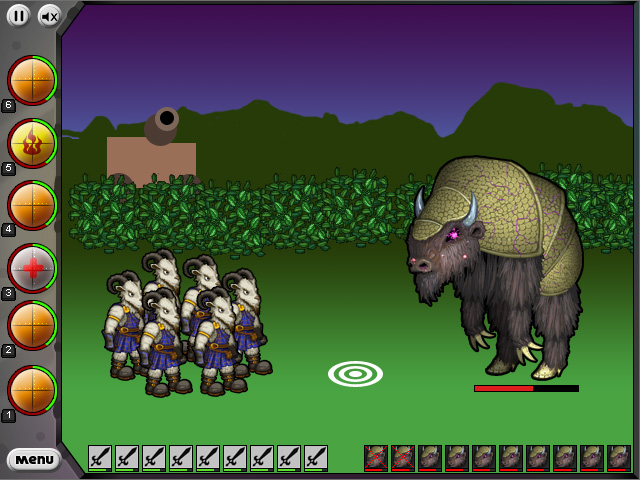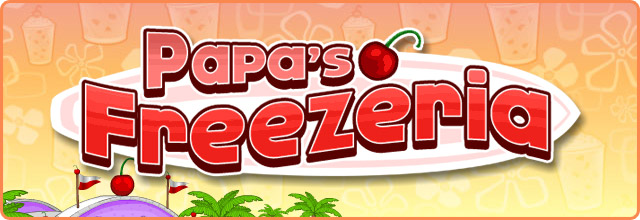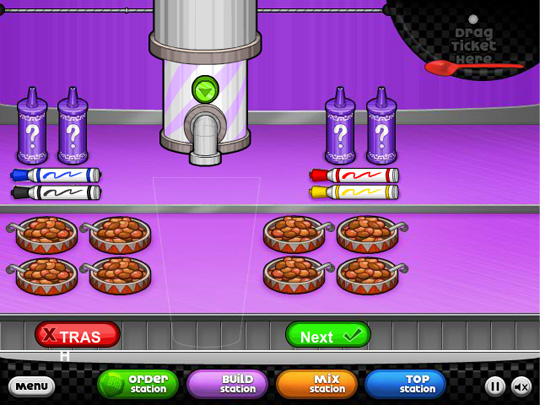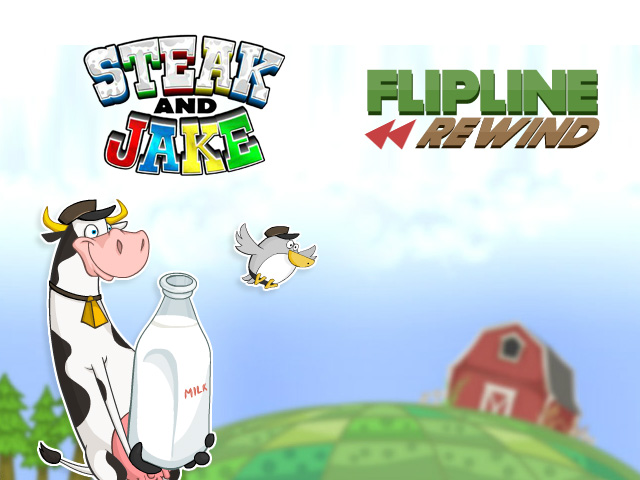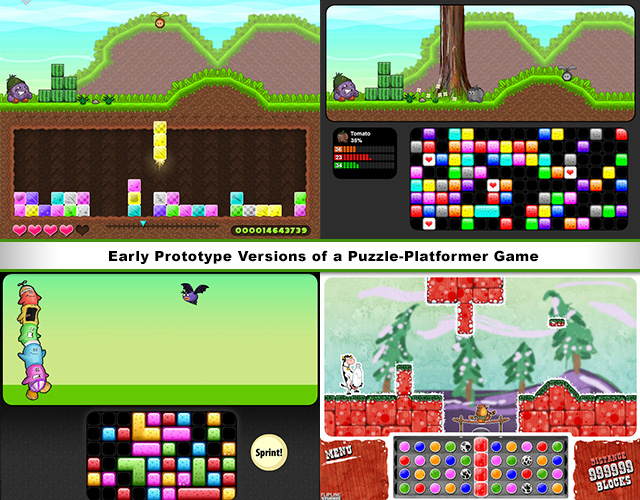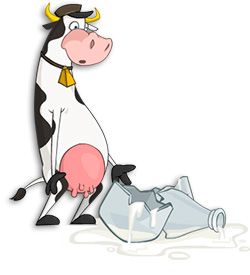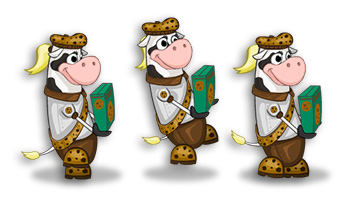Flipline Rewind: Jacksmith

Introduction
At the inception of Papa’s Burgeria, we came to the realization that we could go well beyond pizza with our hands-on style of gameplay.
On that very day, we quickly scrawled down on our whiteboard the basic core structure of what makes a Papa’s game work. While doing that we quickly discussed, “Whoa, wouldn’t it be cool if you made weapons instead of food”. Not knowing where to go with the idea, we wrote “sword crafting” on the whiteboard and left it at that.
Several years and 5 Gamerias later, we wanted to try something brand-new. Although our Papa’s games were immensely popular within the casual games arena, they never quite caught on with the “core” gaming crowd. We would always see our Gamerias getting low ratings on sites geared towards fighting and RPG games, and understandably so. When you’re all about shooting hordes of zombies, a game simulating food preparation was probably not your immediate idea of a good time.
So we decided to challenge ourselves: We would make a game using the main concepts of a Gameria which would somehow appeal to both the “core” and the “casual” gamer. We immediately looked up on our whiteboard, and in that little unerased corner we noticed our years-old note mentioning “sword crafting”.
From there, ideas started pouring out…
What Went Right
1: A World of Warriors and Weapons
We started with a rough idea about the game taking place in Medieval times, where you would be playing as a blacksmith. To bridge the gap between core and casual players, we decided to leave ordinary humans out of the picture and use animals for our entire cast of characters, focusing on the animals that would be found in Europe during the Middle Ages. At one point we even had an idea that you were a field mouse riding on top of a turtle, but we decided to go with larger animals instead.
At first, we thought the whole game would be structured around building swords. However, as we started fleshing things out, we quickly realized we would need a variety of weapons to craft. Soon we “hammered” out our final list of weapon types: Swords, Bows and Arrows, Maces, Pikes, Axes, and Shields.
2. Battles and Bombs
Throughout the course of the brainstorming session, we realized how anticlimactic it would be to make all these weapons for warriors, then call it a day and close up shop. That worked for the Papa’s games, because nobody wants to sit and watch Wally eat an entire anchovy pizza. But in this game, players would know that all the real action was taking place beyond your blacksmith shop, so we decided that the player would need to come along for the ride and see how the weapons held up.
This is when things really started to diverge from the Papa’s formula. Story ideas started flowing, where the Blacksmith was rallying the troops, and he was slowly moving down the road to the final battle. The stationary blacksmith shop soon became a traveling wagon in the distance as the troops battled in the foreground. Seeing your weapons in action would be exciting, but we decided that the player would need something to do during this time so it didn’t just seem like an extended cinematic interlude. Initially, we thought simply picking up loot that the baddies dropped would suffice. After a few tests, we realized that there needed to be something to tie the player in with the action. That’s when we came up with adding a cannon to the wagon, which could use a variety of cannonballs, each with distinct properties that could either help fight baddies or power up your party.
After we planned how the battles would work, we started to flesh out what the player’s progression would be like in the game. We started with the core concept of how progression works in Papa’s games, where you always make forward progress based on how well you perform your tasks, and you never move backwards or get overly penalized for how poorly you play. We learned in Steak and Jake that it was very frustrating to have your progress reset after making one mistake, so we try to keep this lesson in mind for all of our extended-length games. But in Jacksmith, how would a player know if they did exceptionally well crafting weapons? That’s when we decided to add a treasure chest at the farthest point of the battle trail for each day. If you crafted great weapons and used the cannon just right, you could reach these goals, but if you didn’t you would still be that much closer to your next level-up and unlockable item.
So the next problem was what to put in those treasure chests besides just a bunch of loot and gems. As we worked on how weapons would be designed, we soon figured out what would work as a great reward for these chests.
3. Open-Ended Orders
While planning how players would design each weapon order, a problem soon arose when we realized that a player’s inventory of parts and ores would always be changing. Warriors wouldn’t be able to have specific weapons to order, since you might be all out of silver ore or that cool diamond arrowhead. That’s when we came up with the idea of open-ended orders for each weapon. Each animal would have a weapon of choice, and when they came to your shop, they would simply ask for that type of weapon. It would be up to the player to craft the best one for the situation.
We were then faced with another question: Why would you decide to use one part over another when crafting a sword? We decided to give elemental properties to each part and style of weapon, and in turn, elemental properties to different enemies so that strategy became priority in crafting the weapons. Of course, for players to develop a strategy on how to defeat that day’s enemies, they would need to actually know what kind of baddies would be along their path that day. We decided to add a blacksmith apprentice who could scout out the trail before the start and report back to Jacksmith, and that’s where Scout was created. He’d still need to tag along with you and the warriors so he’d be available to help the next day, so we decided he could man the cannon as well.
Now that we had elemental parts and open-ended orders, we had a perfect idea for what could be in the treasure chests: Epic Weapon designs! Since orders were open, we thought it would be cool that if you made a very specific type of sword, using all of the right parts, it would give your warriors extra stat boosts in the next battle. This would also lead to another layer of strategy, where the player might save up certain parts or ores for later instead of using them right away, in hopes of unleashing an Epic Weapon when it would really help in an upcoming battle.
What Went Wrong
1. Elemental Enemy Overload
Enemies were initially just monstrous versions of all the warriors, but when we needed elemental baddies, we decided that each enemy would have a unique visual style for each of the 8 elements. We started on the shield-wielding Woolcrest, with each variation redesigned to match each element. For the wind element it became a Woolwind with feathers and a beak, while for the water element it became a Riverhoof with fins and gills. This proved to be far too labor intensive, and with 72 more elementals to create, we had to resort to simply changing their colors, and even that took a while.
2. Too Much Time Outside
Early on, when the battle sequence was more of a leisurely hands-off experience, we thought we needed to avoid a landscape constantly looping as the battle moved down the road. A great deal of time was spent making randomly-generated backdrops that were different throughout the entire trail. However, once we incorporated the cannon into the mix, we realized that the player was more concerned about the state of their troops, the cannon refills, and picking up loot to notice if they saw that rock in the same location two screens back.
3. Overbooked
One last thing that went wrong was simply the fact that we were not prepared to handle a second highly popular game franchise. Because of this, we were unable to make a timely sequel which would have kept the franchise’s momentum moving at full speed.
Conclusion
Jacksmith was born out of a self-imposed challenge that we could make a game that both “core” and “casual” gamers would enjoy, one that would be highly-rated among fans of the Papa’s games as well as with those who love strategic, battle-fueled games across other sites.
In the end, Jacksmith was a success! The majority of our fanbase fell in love with the game, and it was highly rated across all gaming portals both core and casual. To that degree, we underestimated the success that Jacksmith would have, and we were unable to put our entire focus into a timely sequel that would have surely kept the Jacksmith franchise moving forward. But fortunately, almost 4 years later, Jacksmith is still a relevant Flash game that is being played by hundreds of thousands of people each week!
![]()



